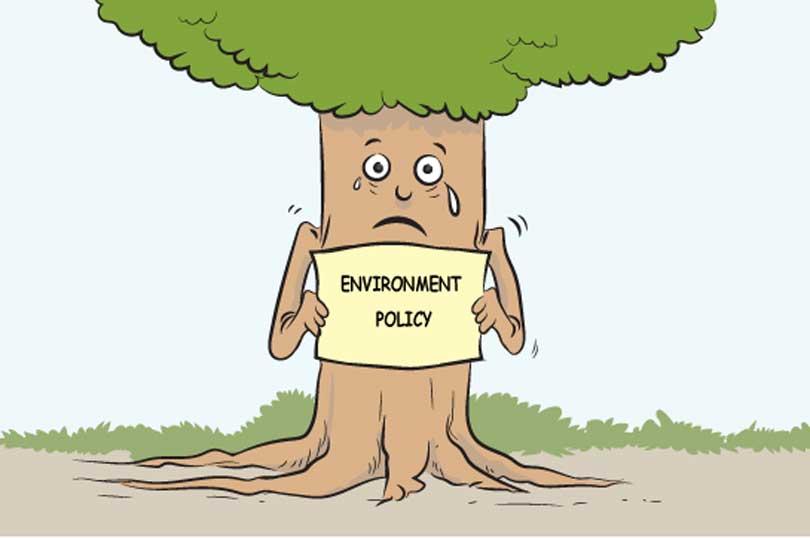Reply To:
Name - Reply Comment

Deforestation in several environmentally sensitive areas in the country has been the focus of discussion in the recent past. Wanathawillu, Anawilundawa and Sinharaja have been making headlines since recent times. Allegation and counter allegations between political parties are traded in this regard while environmentalists are pointing out a dangerous trend of dwindling forest land and forest cover.
A controversy cropped up few weeks ago when President Gotabaya Rajapaksa permitted to construct a road to Lankagama, an isolated village in the southern boundary of the Sinharaja rain forest. While the government ministers argued that the road was not new, but only renovation of an existing road, Opposition parties and environmentalists contended the road work has damaged the ecosystem of Sinharaja forest reserve which is a world heritage and according to the UNESCO, the country’s last viable area of primary tropical rain forest. More than 60% of the trees of the forest are endemic and many of them are considered rare.
Then the Sinharaja forest became the centre of another controversy after a girl alleged during a quiz programme of a TV channel that the Sinharaja environment was being destroyed. Police and the official of the Forest Department had visited the girl following the programme and questioned her about the allegation.
Then again Irrigation Minister Chamal Rajapaksa created another controversy when he said on March 20 at a meeting in Weeraketiya, Hambantota, that two reservoirs of about five acres would be constructed within the Sinharaja rain forest to provide drinking water to Hambanatota District. Opposition parties and the environmentalists protested the proposal claiming it would harm the rain forest which has an endemic wildlife, especially birds and is home to over 50% of Sri Lanka’s endemic species of mammals, butterflies and many kinds of insects, reptiles and rare amphibians.
Deforestation is one of the most serious environmental issues in Sri Lanka since the country’s forest cover is dwindling over the decades. The forest cover which was 49% in 1920s was 29.7% as at 2017. According to official reports, between 1990 and 2000, Sri Lanka lost an average of 26,800 hectares of forests per year. This amounts to an average annual deforestation rate of 1.14%. Between 2000 and 2005 the rate accelerated to 1.43% per annum and the trend continues.
A major hindrance to the environment conservation in Sri Lanka is the politicization of it as all other important matters including large-scale corruption, importation of food items with toxic agents, the COVID-19 pandemic and the disposal of dead bodies of pandemic victims. Ruling parties have always been defending those involved in deforestation or any other environment damages while the Opposition parties which in fact the former ruling parties whose tenure too had seen similar destruction, use the current situations to gain political mileage.
When a minister was accused of deforestation in Wilpattu area before 2015, it was the United National Party (UNP) that appeared as the savior of the environment in the area, but with the regime change in 2015, both parties swapped roles.
Also there seems to be environment extremism in the country. Recently a group of villagers in Kantale who had been forced to evacuate their homes due to the threats by the LTTE during the war had been forced again to evacuate the same area by the government authorities when they returned to their original habitat. They alleged that the Forest Department had taken over their village while they were away from the area due to threats to their lives. Same issue cropped up when the people who had been chased away by the LTTE in 1990 returned to their original villages such as Musali and Marichchikattu in the Mannar District. Also basic welfare of the people in environmentally sensitive areas is also ignored by the environmentalists.
The need of the hour is a clear cut State policy which could preserve the environment including increasing the forest cover of the country while preventing commercialization of the environment and enhancing human rights of the people traditionally living in environmentally sensitive areas.